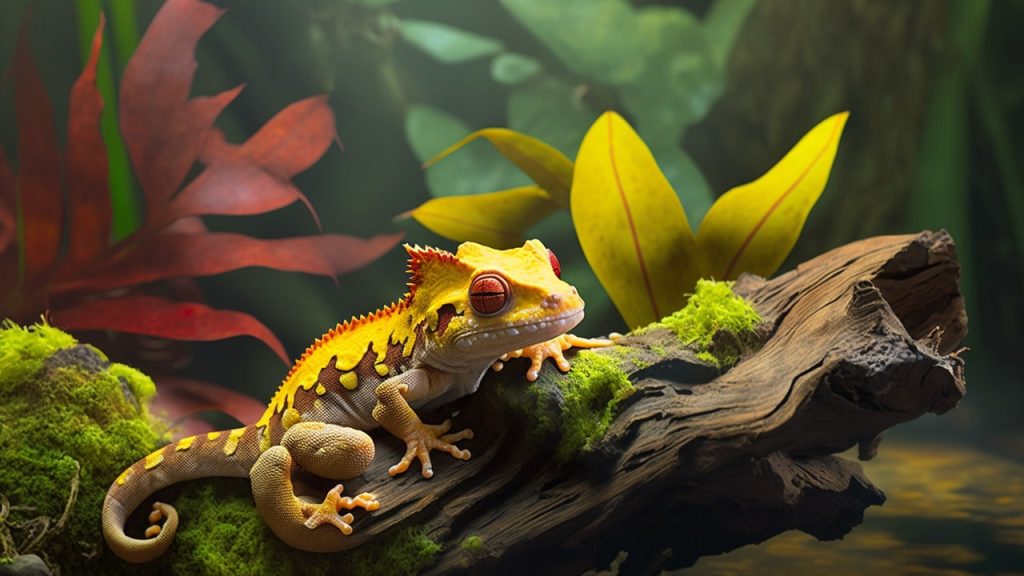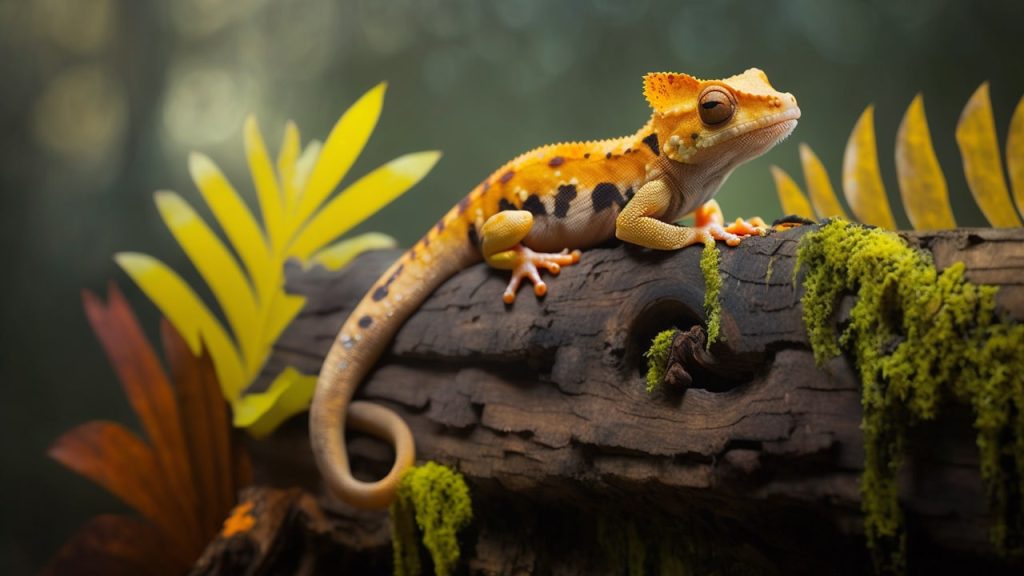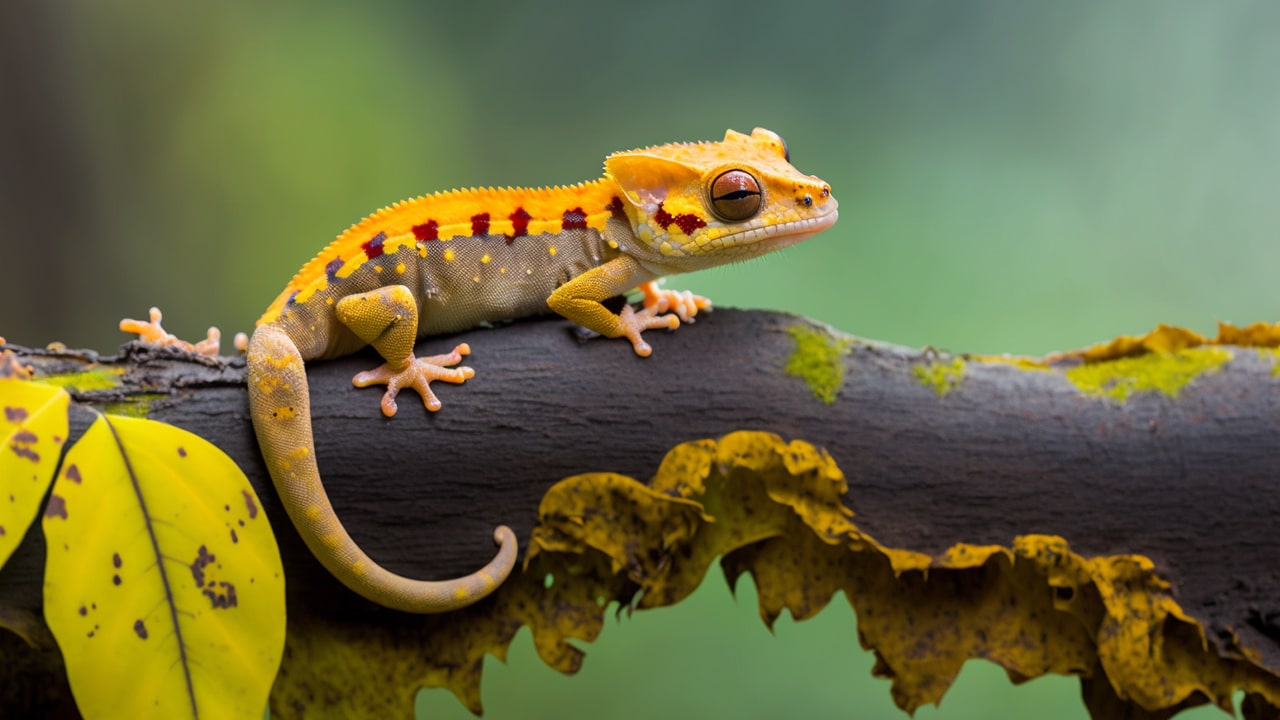Geckos are fascinating and popular reptiles that are kept as pets all over the world. Breeding geckos can be a rewarding experience for pet owners, but it requires careful research and preparation. In this article, we will discuss the easiest geckos to breed and the factors to consider before breeding them.
Contents
Factors to consider before breeding geckos – Easiest Gecko to Breed
Breeding geckos requires more than just putting a male and female gecko together. Here are some essential factors to consider before breeding geckos:
Research and choose the right species: Not all gecko species are easy to breed, and some require specific environmental conditions. Research different gecko species and choose the one that suits your breeding goals and environment.
Ensure proper habitat and diet: Geckos need a suitable habitat and a nutritious diet to stay healthy and reproduce successfully. Make sure that the geckos have access to clean water, a balanced diet, and an environment that mimics their natural habitat.
Know the breeding season of the species: Geckos have different breeding seasons, and it’s important to know when they are most likely to mate. Breeding during the wrong season can result in infertile eggs or a failed breeding attempt.
Easiest geckos to breed
While all gecko species require some level of care and attention, some are easier to breed than others. Here are the easiest geckos to breed:
- Leopard geckos: Leopard geckos are one of the most popular and easiest gecko species to breed. They are hardy, low-maintenance, and have a straightforward mating and egg-laying process.
- Crested geckos: Crested geckos are another popular gecko species that are easy to breed. They are also low-maintenance and have a relatively short incubation period.
- African fat-tailed geckos: African fat-tailed geckos are docile, hardy, and easy to breed. They have a high fertility rate and a straightforward breeding process.
Breeding leopard Geckos
Leopard geckos are native to arid regions of Pakistan, India, and Afghanistan. They are hardy and relatively easy to breed, making them a popular choice among pet owners. Here are the essential steps to breeding leopard geckos:
Habitat and diet requirements:
To breed leopard geckos successfully, you must first ensure that they have a suitable habitat and a nutritious diet. Leopard geckos require a temperature gradient in their enclosure, with a warm side (around 90°F) and a cool side (around 75°F). They also need a hide box and a shallow dish of clean water.
Leopard geckos are insectivores and require a varied diet that includes live insects such as crickets, mealworms, and roaches. Dust the insects with calcium and vitamin supplements to ensure that your geckos get all the nutrients they need.
Mating and egg-laying process:
Once your leopard geckos are healthy and well-fed, you can start the breeding process. Male leopard geckos will exhibit aggressive behavior when they are ready to mate. They may also make a distinctive chirping sound to attract females.
To introduce male and female leopard geckos, place them together in a breeding enclosure for a few hours each day. Watch them carefully for signs of aggression or mating behavior. Once mating occurs, the female will lay eggs within a few weeks.
Incubation and hatching of eggs:
Leopard gecko eggs are small and white, and they need to be carefully incubated to hatch successfully. Collect the eggs carefully and place them in an incubator with a temperature between 82°F and 88°F. Monitor the humidity levels carefully and ensure that the eggs do not dry out.

Leopard gecko eggs take around 45-60 days to hatch, depending on the incubation temperature. Once the eggs hatch, you will need to provide the hatchlings with a suitable habitat and a diet of small insects.
Breeding Crested Geckos
Crested geckos are a popular pet reptile species that are relatively easy to breed. Here are the essential steps to breeding crested geckos:
Habitat and diet requirements:
Before you start breeding crested geckos, you must ensure that they have a suitable habitat and a nutritious diet. Crested geckos require a tall enclosure with plenty of vertical climbing space and a temperature range between 72°F and 80°F. They also need high humidity levels of around 60-80%, which can be maintained by misting the enclosure regularly.
Crested geckos are omnivores and require a varied diet that includes insects and fruit. Offer them live insects such as crickets and roaches, as well as mashed fruit or baby food.
Mating and egg-laying process:
Crested geckos are capable of reproducing both sexually and asexually, but breeding with a mate can result in stronger and healthier offspring. To breed crested geckos, place a male and female together in a breeding enclosure and watch for signs of mating behavior.
Female crested geckos will lay eggs on their own, and the eggs should be removed from the enclosure carefully. Crested gecko eggs take around 30-45 days to hatch, depending on the incubation temperature.
Incubation and hatching of eggs:
Crested gecko eggs should be incubated at a temperature between 72°F and 78°F, with humidity levels around 80-90%. Monitor the eggs carefully and ensure that they do not dry out or become too wet.
Once the eggs hatch, you will need to provide the hatchlings with a suitable habitat and a diet of small insects and fruit.
Breeding crested geckos can be a rewarding and educational experience for pet owners. With the right care and attention, you can successfully breed healthy crested geckos and enjoy watching them grow and thrive.
Breeding African fat-tailed Geckos
Breeding African fat-tailed geckos is a fascinating and rewarding experience for reptile enthusiasts. Here’s what you need to know about breeding African fat-tailed geckos:
Habitat and diet requirements:
African fat-tailed geckos require a warm, humid environment to thrive. The ideal temperature range is between 82°F and 88°F, and humidity should be maintained at around 60-70%. Provide them with a suitable enclosure that includes hiding places, climbing structures, and a substrate that retains moisture, such as coconut fiber or sphagnum moss.
African fat-tailed geckos are carnivores and require a diet that includes live insects such as crickets, mealworms, and dubia roaches. Offer them a variety of insects to ensure a balanced diet.
Mating and egg-laying process:
African fat-tailed geckos can be bred from around one year of age. To breed African fat-tailed geckos, you will need a male and female gecko. Place them in a suitable breeding enclosure and watch for signs of mating behavior.
Female African fat-tailed geckos will lay eggs on their own, and the eggs should be removed from the enclosure carefully. African fat-tailed gecko eggs take around 45-60 days to hatch, depending on the incubation temperature.
Incubation and hatching of eggs:
African fat-tailed gecko eggs should be incubated at a temperature between 84°F and 88°F, with humidity levels around 70-80%. Monitor the eggs carefully and ensure that they do not dry out or become too wet.
Once the eggs hatch, you will need to provide the hatchlings with a suitable habitat and a diet of small insects.

Breeding African fat-tailed geckos can be a rewarding experience for pet owners who are interested in reptile breeding. With proper care and attention, you can successfully breed healthy African fat-tailed geckos and enjoy watching them grow and develop into adult geckos.
Conclusion:
Breeding geckos can be a rewarding experience for reptile enthusiasts, but it requires careful attention to detail and a commitment to responsible breeding practices. In this article, we’ve covered the breeding requirements for three different species of geckos – leopard geckos, crested geckos, and African fat-tailed geckos.
We’ve discussed the habitat and diet requirements for each species, as well as the mating and egg-laying process, and the incubation and hatching of eggs. It’s important to note that breeding geckos should only be done by experienced pet owners who are knowledgeable about the specific needs of each species.
The Importance of Responsible Breeding:
Responsible breeding is essential to ensure the health and well-being of geckos. This includes providing suitable habitats, a balanced diet, and proper medical care. It’s also important to avoid overbreeding, which can lead to health problems for the geckos and contribute to the overpopulation of unwanted pets.
Final Thoughts:
Breeding geckos can be a fulfilling experience, but it requires a commitment to responsible breeding practices. Before deciding to breed geckos, it’s important to do your research and ensure that you have the knowledge and resources to provide the necessary care for both the adult geckos and their offspring.
FAQs:
1. How often can leopard geckos lay eggs?
Leopard geckos can lay eggs every 15-20 days during the breeding season, which typically lasts from January to September.
2. Do crested geckos need special lighting for breeding?
Crested geckos do not require special lighting for breeding, but they do require a warm and humid environment.
3. What is the average lifespan of African fat-tailed geckos?
African fat-tailed geckos can live for up to 15 years with proper care.
4. Can different species of geckos mate and produce offspring?
No, different species of geckos cannot mate and produce offspring.
5. How long does it take for gecko eggs to hatch?
The incubation period for gecko eggs varies depending on the species, but it typically ranges from 45-90 days.


